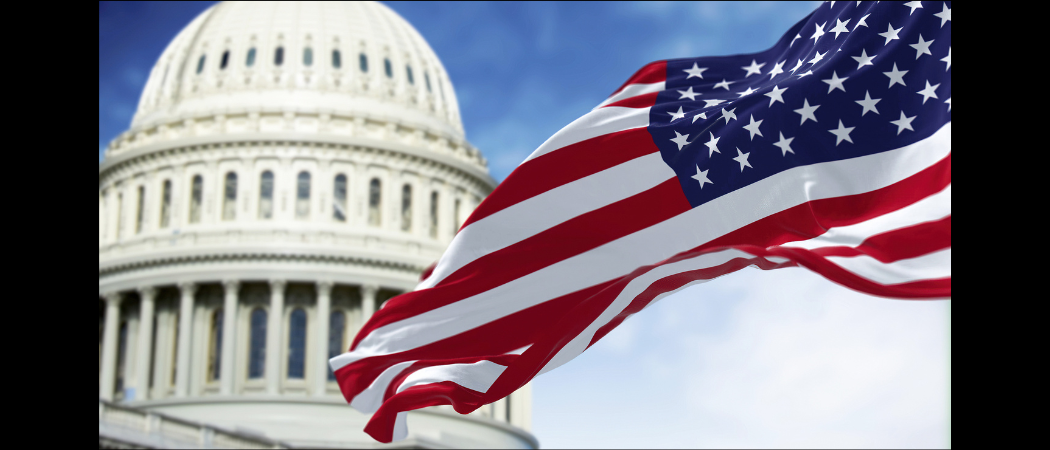Policymakers are partly flying blind, with existing analysis fractured across an alphabet soup of different agencies. An overarching entity could underpin a more coherent science and technology strategy, but will need money from Congress to get off the ground

A push is underway in the US to set up a new national entity that would give policymakers a much better overview of the costs and benefits of backing new technologies, from their significance for national security to the possible impacts on economic inequality.
In a new era of competition with China, this is part of an attempt in Washington DC to craft a comprehensive national science and technology strategy.
US experts are worried that the country simply does not know enough about its R&D system and where bottlenecks to progress might exist, with data and expertise fragmented across multiple agencies. This mirrors similar concerns in Europe.
“Does government today have in its hands the data and analytic capacity to form its national technology strategy? The answer is no, it does not,” said Erica Fuchs, director of the National Network for Critical Technology Assessment (NNCTA), set up to assess the problem.
The NNCTA was formed after last year’s CHIPs and Science Act mandated several agencies to start scoping work to create a new national science and technology strategy, a significant move in a country that has often left things to market forces rather than government planning.
Made up of science and technology experts across the US, the network recently released a report recommending a body or programme, modelled on the Defense Advanced Research Projects Agency, be created to get a better handle on the US’s R&D strengths and weaknesses.
This report piloted new analyses of several sectors, like artificial intelligence, semiconductors and pharmaceuticals. It found that in all these areas, China is now producing more “disruptive” papers than the US, and gave several suggestions for policymakers about how to turn this around.
The idea is that this new assessment body would help the White House Office of Science and Technology Policy (OSTP) to draw up a national science and technology strategy, as mandated under the CHIPs and Science Act. As well as a strategy, the OSTP needs to carry out a “review” of science and technology in the US every four years.
These new periodic reviews and strategies are “a really good idea,” said Kelvin Droegemeier, who was OSTP director from 2019-2021. “We have such strategies for defence and energy but not more broadly for R&D, especially in critical technology areas that have implications for global competition and national and economic security,” he said.
Unless the US better identifies its weaknesses and the technologies to address them, “we have no idea what we're doing,” warned Fuchs.
Fractured agencies
The recent NNCTA report, Securing America’s Future: A Framework for Critical Technology Assessment, published on 24 October, makes the case that US policymakers, as well as companies and the public, are sometimes woefully underinformed about the country’s technological strengths and weaknesses.
“The sources and breadth of published science and technology knowledge have expanded at unprecedented rates for the past half-century. The institutions to support policymakers in light of this expansion have not kept up,” it says.
The US government, as well as think tanks, do of course produce a plethora of reports and assessments of science and technology – the report lists an alphabet soup of agencies that analyse the R&D system in different ways.
But too often, they don’t share data or methods. What’s more, some key information about technological advances is locked away in private firms.
Hence the need for a new national entity or programme to focus and synthesise all this disparate expertise. “Oh my gosh, if we just used this, we could make such better decisions,” said Fuchs, who is an engineering and public policy professor at Carnegie Mellon University.
Another problem is that existing agencies all have their own objectives, be it in national security, employment or the environment, and assess new technologies mainly on those criteria.
A new national assessment entity would instead try to look at the impact of different policy options across a range of priorities, from the economy to inequality.
“Unlike a firm a nation has multiple missions,” said Fuchs. “Can we show the implications of science and technology investment for those multiple objectives so that legislators can then decide what they care about?”
Pilot projects
The NNCTA spent a year and nearly $4 million, on several pilot reports that delved into various critical technology areas, like where the US stands in semiconductor research and manufacturing, and how it can ensure a secure supply chain to make electric car batteries.
These analyses were unique, argued Fuchs, because they involved experts from across the academic spectrum, including those on the cutting edge of technology development. New data and analytics capabilities were also used to reach new insights.
One finding, for example, is that US researchers have less access than researchers in other top nations to leading-edge commercial semiconductor fabs - something critical to scale up new technologies, said Fuchs.
Making better access a condition of receiving subsidies “could be a great step that doesn't need to cost a lot of money,” she said.
Another suggestion is to accelerate research into and adoption of alternatives to cobalt for electric batteries, to circumvent long-running vulnerabilities in the supply of this metal.
EU technology security
The EU is also trying to better map and strategise when it comes to crucial technologies, rather than just leave it to the market or curiosity-driven research by scientists.
In June, the European Commission launched an Economic Security Strategy, which while not quite so narrowly focused on science and technology, does include promises to assess risks in technology security, to explore targeted support for dual-use technology research, and to prevent technology leakage to outside powers.
This is being followed up by the €10 billion Strategic Technologies for Europe Platform, to reduce EU reliance on others, by investing in areas like artificial intelligence, renewable energy and pharmaceuticals.
Last year, the Berlin-based Mercator Institute for China Studies also warned that the EU lacked good data on science and technology, particularly on Chinese research collaborators, and whether they were linked to the military or security agencies. There is an information “asymmetry” between the EU and China, it warned.
Money
Whether a new US body for monitoring science and technology gets off the ground depends on the country’s sharply divided lawmakers. It could end up as a full-blown new agency, or a smaller programme or entity at the White House or National Science Foundation, for example.
“It’s difficult to say [whether it will receive funding], but despite divisions in Congress, I believe a great deal of agreement exists when it comes to US science and technology leadership internationally,” said Droegemeier.
“In the end, it’s going to be a question for Congress, and what they appropriate,” said Fuchs. “I would argue that we have no time to waste. Both our allies and our competitors are watching.”





 A unique international forum for public research organisations and companies to connect their external engagement with strategic interests around their R&D system.
A unique international forum for public research organisations and companies to connect their external engagement with strategic interests around their R&D system.